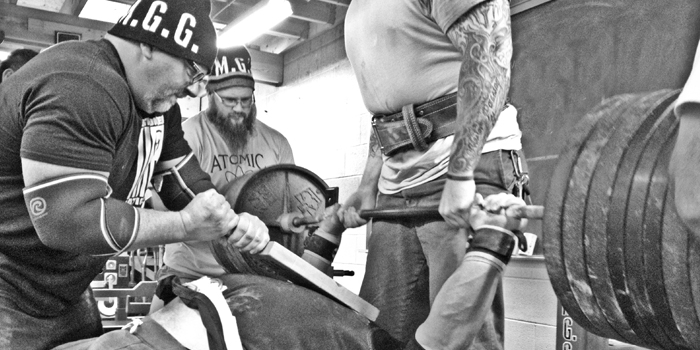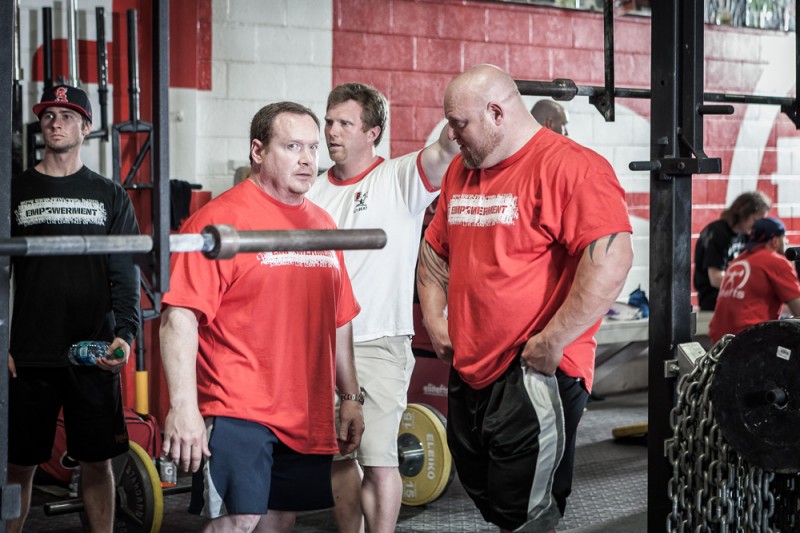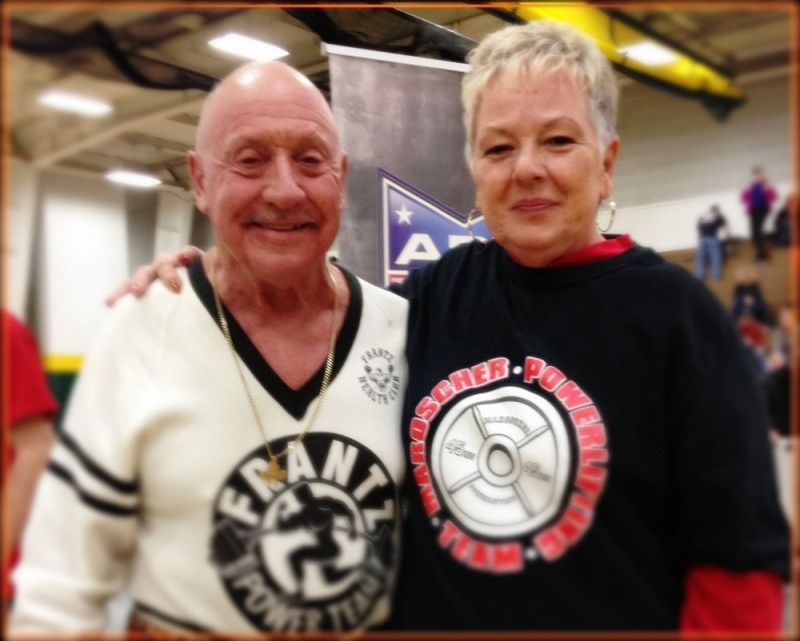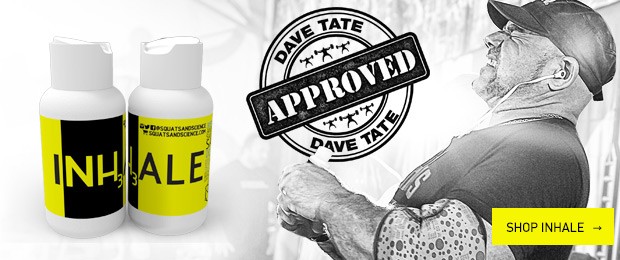
The world of strength and power finds its origins far back in history. This early history is depicted in the details of organized challenges that took place back in Greek and Roman times.
More recently, the foundation for what is now recognized as powerlifting dates back to the 1950s, thus putting powerlifting somewhere around the seven-decade mark as an organized sport. The first national powerlifting championship occurred back in 1964 and in some ways can be considered the birthdate of our great sport.
There is a huge list of things the sport of powerlifting has produced over these seven decades. Within this sizable list, the sport has consistently produced two specific items over and again, each and every single decade. The first is Elders, and the second is Icons.
RECENT: It Has Something to Do with the Struggle
Elders are those individuals in powerlifting whose lifetimes have been embedded into the fabric of iron and steel, chalk, and sweat. Elders in our sport are those individuals who have not merely powerlifted but who have lived this powerlifting lifestyle and have done so year after year after year, decade after decade after decade. Over the decades, these Elders have been collecting information and disaggregating data, and they have been doing this through firsthand experiences during lifetimes “under the bar.” These sources of knowledge, knowledge that only life experience can produce, are contained within a given era’s Elders. Elders are more than just the keepers of information; they are those individuals who have not only the ability to share, to teach, and to mentor others with their amassed perspective, but also the desire to do so. Elders are those unique and few-and-far-between individuals who are critical to the growth of sports’ future generations, as they have not only survived in this body-violent venture but also thrived in it. Elders are those who found success not only in the weight room, not only on the platform, but also at the big high-stakes, high-pressure meets where strength alone won’t suffice. Meets instead where strength and experience and strategy and drive and contemplation and power and athleticism all must intersect at the precise right moment as the best in the world compete to see whose name ultimately ends up making it into the book that is the history of competitive powerlifting. Time, successes, failures, lessons, and experiences serve to elevate these Elders above the masses of weekend warriors, above the shoulda-woulda-coulda lifters, above those who talk the game but have never walked the talk, above those who are here today and gone later today. Elders are the Yodas of our sport, as their mentorship is immeasurable in its value.
Over the seven decades of our sport, Icons of eras are also created. Icons are those figures who in some way represent our sport in a given era, a given timeframe during the history of the sport. Icons are those special individuals whose footprints are larger than those of the other champions who fall within their peer group, and these individuals somehow transcend time. Thus, they are always associated with the given periods during which they competed. For example, Paul Anderson is an icon in strength sports, and he is an Icon synonymous with the era of 1950s strength sports. Another Icon in the world of weights is Arnold, “no last name needed.” Arnold, although he is an entity who is clearly larger than the sport, is an icon for 1970s bodybuilding, along with his training partner and fellow iron Icon, Franco. Both are iconic images of the 1970s and are so significant in their statuses that this entire period is now considered to be the golden era of bodybuilding. A more modern Icon in our sport of powerlifting is Ed Coan who is considered by most Elders, peer Icons, and lifter historians to be the greatest powerlifter of all time.
“Beware of false prophets, who come to you in sheep’s clothing” is how the saying goes.In a sport that financially costs its participants money rather than pays them, powerlifting is a sport comprising those primarily bitten by the iron bug, those who lift for the love of lifting and to whom the competition is an excuse to get to train and to get to train hard and with a purpose at the gym. Those who without an organized sport would still toil and sweat and lift for the love of lifting in their own garages or basement weight rooms.
I can’t personally speak for meets prior to the 1980s or as far back as the 1960s, but from my perspective, having competed since the late 1980s, the Elders and Icons of this sport we love, who were our teachers and sources of motivation, were easily identified up to a certain point. These were individuals who were steeped in the sport and who ascended to the top of it. These were individuals who served not only as sources of inspiration but also as precious sources of information. These were individuals who not only possessed this information but who also relished in the sharing of that information. Just as paying out of one's own pocket to travel to compete was par for the powerlifter’s course, so, too, were the gift and joy of sharing lifting knowledge by the Elders and Icons.
The days of the old-school, hard-core powerlifting gym have, with a few exceptions, gone the way of the dinosaur. This mass extinction is partly due to the fact that there is money to be made in the “fitness industry,” and the corporate cookie-cutter gyms have choked out the mom-and-pop gyms and the hard-core gyms that were the breeding grounds for serious lifters in the 1970s, in the 1980s, and through the mid-1990s. One is hard pressed to find a throwback gym, a gym whose members clap off the excessive chalk from their calloused hands, breathe in ammonia, and strive to be as great of a lifter as their bodies, training, and drive will allow them to become.
Powerlifting has always been a subculture within a subculture, but as the man-bun has become vogue, ironically, so has, to a degree, powerlifting. Powerlifting has gained popularity through the feeder programs out there that charge $150 monthly fees, and where a squat shoe has become a fashion statement rather than the utilitarian tool it was designed to be. This recent popularity is fertilized by those who confuse the importance of a big socialookatmedia footprint with the importance of a big total. Said another way, there is money to be made off of powerlifting now, and with the prospect of money come the numbers but also the false prophets. With money comes marketing, with money comes the sales pitch, with money comes the snake oil sales men and women. With money comes a large social media footprint and thus an internet bursting at the seams with self-proclaimed Elders, and Instagram-manufactured Icons. With money come those who use smoke and mirrors and train with fake plates and those who try to impress with gym lifts but have never tested their mettle on the platform. With money comes not only too much information but also inferior-quality and even inaccurate and plain-old-fashioned false information.
MORE: Why the Smartphone is Your Greatest Advantage in Meet Training
This popularity that one could successfully argue is unwanted by the serious powerlifting all comes, of course, at a price. And that price to pay is paid in full by the lifter who is new to the sport. That new lifter who sees the IG posts but doesn’t know how to evaluate what they are being force fed through their screens; thus, they acquiesce to them. Through this acquiescence, they purchase that program, buy those shoes, hand over their cash for that newest “secret method,” never having a chance to learn from the real Elders or authentic Icons whose statures in the sport were hard earned.
Instead, they have been snagged by those false prophets who sell information for a price rather than invest information into aspiring new powerlifters. They have been entrapped by those selling a program rather than helping to build a foundation. They have been lured into drinking the Kool-Aid that celebrates slamming down a successful 400-pound deadlift rather than setting down a controlled 700-pound deadlift. They have been exposed to the pursuit of LIKES rather than to the pursuit of a massive competition total. Those caught up in the popularity of this 70-year-old sport often can’t see beyond the acquisition of followers to the reality that powerlifting is a journey that has no final destination but rather critical stops along the way. Stops where the lifter finds himself or herself ever striving to improve.
I, along with other lifters in Illinois, the land of Lincoln, Frantz, and Coan, have been fortunate to grow up under the bright light of true Elders and Icons, and without the fog of and haze of social media false prophets. True Elders and Icons of powerlifting are individuals who not only know the sport but also often know individual lifters personally because they train at their gyms. In those instances, these mentors care for an individual, they impart knowledge to the individual specifically, they invest in the individual because they believe in that individual. They know their strengths, their weaknesses, their technique, their training, their nutrition, and their life circumstances, as all of those things play a critical role in that lifter’s success or failure or struggle or ascension in the sport.
What we are not saying is that a person is not entitled to make legitimate money from this sport. So, don’t get that twisted. By all means, make money and help make people strong(er). But what we are absolutely saying is, BEWARE OF FALSE PROPHETS, those who come to you in sheep's clothing. Remember, Elders and Icons possess knowledge, but so do the charlatans. However, it is the intended use and the origins of said acquisition of that knowledge that differs. Elders and Icons acquire their knowledge base through years and decades of work in the trenches. Charlatans, these false prophets, acquired their knowledge by cherry picking from those Elders and Icons and others who came before them. They try to be seen by standing on the massive shoulders of those who have earned the right to be revered, honored, respected.
There are two factors that are limiting one's exposure to true Elders and Icons in our sport. One is, there simply are not the powerlifting gyms today that there once were, so those who possess this wealth of knowledge are fewer and further between. Second, it is harder to find the ones who still exist, as the internet is flooding the market with a seemly neverending onslaught of false prophets. False prophets are working hard to be found on the net and social media so that they can sell their snake oils, whereas the Elders and Icons are working hard on training their precious handfuls of serious powerlifters at their gyms.
During this current Kardashianesque era of what is powerlifting’s current timeline, where one can be famous for just being famous or be held in higher esteem through purchased followers, the newer powerlifter must be discerning in his, her, their search for mentors. In a time when today’s lifters search for their influences on a screen, perhaps it is more beneficial to find one of those hidden-away gyms where experienced lifters train in radio silence. Where powerlifters focus on technique, the journey, and the sizes of their totals, rather than the sizes of their social media followings. Be that eight-track lifter in a download society, and find the real McCoy with that Elder at your gym, that Icon in your area. Find those who have been there, done that, versus those selling you on who they are and what you can buy from them.
Wishing you the best in your powerlifting journey.












